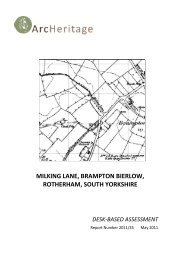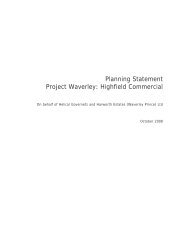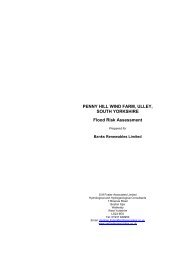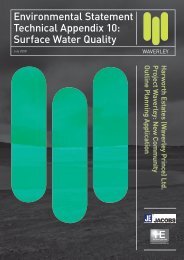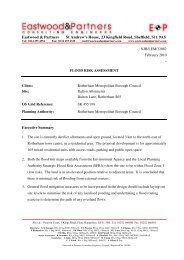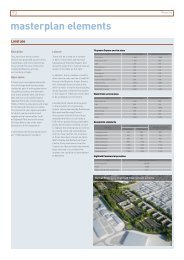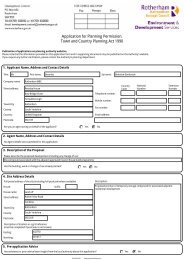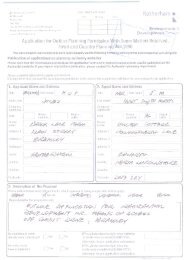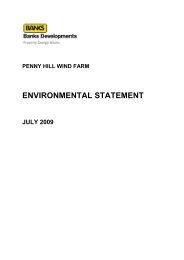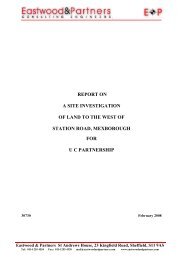environmental statement - Rotherham's Online Application for ...
environmental statement - Rotherham's Online Application for ...
environmental statement - Rotherham's Online Application for ...
You also want an ePaper? Increase the reach of your titles
YUMPU automatically turns print PDFs into web optimized ePapers that Google loves.
7.41 There are some small areas of semi-natural broadleaved woodland within<br />
the study area. These areas are uncommon within the study area and<br />
provide important habitat <strong>for</strong> a range of flora and fauna. The area of<br />
woodland that bounds Ulley Brook is wet woodland, and this habitat is<br />
included on both the UKBAP and LBAP. It is considered that these areas<br />
of woodland are locally important and have been assigned a Nature<br />
Conservation Value of Low – Local Importance. There are some very<br />
small areas of improved and semi-improved grassland within the study<br />
area. These habitat types are predominantly used <strong>for</strong> grazing of<br />
cattle/sheep and are not listed on the UKBAP or LBAP. They are also<br />
common and widespread in the wider area, and there<strong>for</strong>e these habitat<br />
types have been assigned a Nature Conservation Value of Parish -<br />
Negligible Importance.<br />
7.42 There are a number of watercourses within the study area. These mainly<br />
consist of drainage ditches which offer poor water quality; however they do<br />
provide important wildlife corridors and refuges. There are two larger<br />
watercourses within the study area, which are branches of Ulley Brook.<br />
These watercourses differ from the others principally due to their greater<br />
volume of water, faster flow and better water quality. These watercourses<br />
also provide suitable habitat <strong>for</strong> protected species such as otter and water<br />
vole (although no signs of these species were found). They have<br />
there<strong>for</strong>e been assigned a Nature Conservation Value of Low – Local<br />
Importance. The pond adjacent to the study area appears to be a<br />
temporary drainage pond. Ponds and lakes are included on both the<br />
UKBAP and LBAP. This pond has there<strong>for</strong>e been assigned a Nature<br />
Conservation Value of Low – Local Importance.<br />
Bat Survey<br />
7.43 The most commonly recorded species recorded during the surveys was<br />
common pipistrelle which is common and widespread in the UK and in<br />
Yorkshire. Other species were recorded infrequently, in line with their<br />
status in Yorkshire. Furthermore, no bat roosts were identified. However,<br />
one of species recorded (brown long-eared) is a UKBAP priority species.<br />
The bat species recorded within the study area have been given a Nature<br />
Conservation Value of Medium – Regional Importance as they receive<br />
both European and British legal protection, one of these is a UKBAP<br />
species, and some of the species recorded are less common in Yorkshire<br />
such as natterer‟s and whiskered/brandt‟s.<br />
Badger Survey<br />
7.44 Badgers are found throughout mainland Britain and Ireland but are patchily<br />
distributed in the northern Highlands of Scotland (Woods, 1995). They are<br />
widespread throughout Yorkshire and Humberside, including across the<br />
Rotherham borough (Rotherham BAP, 2004). It is considered that up to<br />
two badger social groups could exist in the study area with one of the<br />
social group‟s main sett located within the study area. Badger is listed on<br />
the LBAP, but not on the UKBAP. The badger population within the study<br />
179<br />
Penny Hill Wind Farm<br />
Environmental Statement



